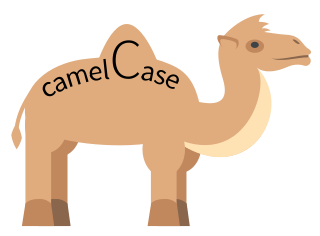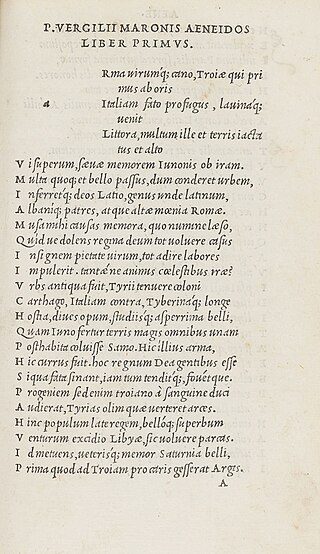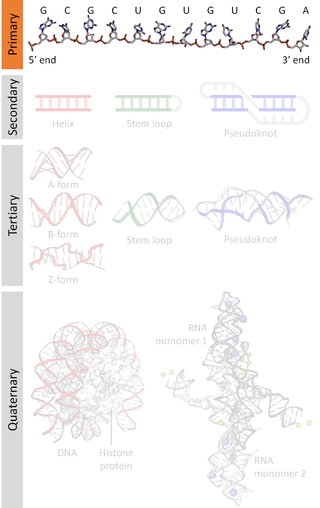Related Research Articles
An abbreviation is a shortened form of a word or phrase, by any method. It may consist of a group of letters or words taken from the full version of the word or phrase; for example, the word abbreviation itself can be abbreviated as abbr., abbrv., or abbrev.. It may also consist of initials only, a mixture of initials and words, or words or letters representing words in another language. Some types of abbreviations are acronyms or grammatical contractions or crasis.

Amino acids are organic compounds that contain both amino and carboxylic acid functional groups. Although over 500 amino acids exist in nature, by far the most important are the 22 α-amino acids incorporated into proteins. Only these 22 appear in the genetic code of life.
In communications and information processing, code is a system of rules to convert information—such as a letter, word, sound, image, or gesture—into another form, sometimes shortened or secret, for communication through a communication channel or storage in a storage medium. An early example is an invention of language, which enabled a person, through speech, to communicate what they thought, saw, heard, or felt to others. But speech limits the range of communication to the distance a voice can carry and limits the audience to those present when the speech is uttered. The invention of writing, which converted spoken language into visual symbols, extended the range of communication across space and time.

Camel case is the practice of writing phrases without spaces or punctuation and with capitalized words. The format indicates the first word starting with either case, then the following words having an initial uppercase letter. Common examples include YouTube, PowerPoint, HarperCollins, FedEx, iPhone, eBay, and LaGuardia. Camel case is often used as a naming convention in computer programming. It is also sometimes used in online usernames such as JohnSmith, and to make multi-word domain names more legible, for example in promoting EasyWidgetCompany.com.

An identifier is a name that identifies either a unique object or a unique class of objects, where the "object" or class may be an idea, physical countable object, or physical noncountable substance. The abbreviation ID often refers to identity, identification, or an identifier. An identifier may be a word, number, letter, symbol, or any combination of those.
Virus classification is the process of naming viruses and placing them into a taxonomic system similar to the classification systems used for cellular organisms.
Nu is the thirteenth letter of the Greek alphabet, representing the voiced alveolar nasal IPA:[n]. In the system of Greek numerals it has a value of 50. It is derived from the ancient Phoenician language nun . Its Latin equivalent is N, though the lowercase resembles the Roman lowercase v.

In molecular biology, RNA polymerase, or more specifically DNA-directed/dependent RNA polymerase (DdRP), is an enzyme that catalyzes the chemical reactions that synthesize RNA from a DNA template.

In typography, italic type is a cursive font based on a stylised form of calligraphic handwriting. Along with blackletter and roman type, it served as one of the major typefaces in the history of Western typography.

A nucleic acid sequence is a succession of bases within the nucleotides forming alleles within a DNA or RNA (GACU) molecule. This succession is denoted by a series of a set of five different letters that indicate the order of the nucleotides. By convention, sequences are usually presented from the 5' end to the 3' end. For DNA, with its double helix, there are two possible directions for the notated sequence; of these two, the sense strand is used. Because nucleic acids are normally linear (unbranched) polymers, specifying the sequence is equivalent to defining the covalent structure of the entire molecule. For this reason, the nucleic acid sequence is also termed the primary structure.
Sigma is the eighteenth letter of the Greek alphabet. In the system of Greek numerals, it has a value of 200. In general mathematics, uppercase Σ is used as an operator for summation. When used at the end of a letter-case word, the final form (ς) is used. In Ὀδυσσεύς (Odysseus), for example, the two lowercase sigmas (σ) in the center of the name are distinct from the word-final sigma (ς) at the end. The Latin letter S derives from sigma while the Cyrillic letter Es derives from a lunate form of this letter.

In genetics and bioinformatics, a single-nucleotide polymorphism is a germline substitution of a single nucleotide at a specific position in the genome that is present in a sufficiently large fraction of considered population.

A gene family is a set of several similar genes, formed by duplication of a single original gene, and generally with similar biochemical functions. One such family are the genes for human hemoglobin subunits; the ten genes are in two clusters on different chromosomes, called the α-globin and β-globin loci. These two gene clusters are thought to have arisen as a result of a precursor gene being duplicated approximately 500 million years ago.

Letter case is the distinction between the letters that are in larger uppercase or capitals and smaller lowercase in the written representation of certain languages. The writing systems that distinguish between the upper- and lowercase have two parallel sets of letters: each in the majuscule set has a counterpart in the minuscule set. Some counterpart letters have the same shape, and differ only in size, but for others the shapes are different. The two case variants are alternative representations of the same letter: they have the same name and pronunciation and are typically treated identically when sorting in alphabetical order.

An acronym, a type of abbreviation, is a word or name consisting of parts of the full name's words. Some authorities add that an acronym must be pronounced as a single word rather than individual letters, so considering NASA an acronym but not USA; the latter they instead call an initialism or alphabetism, for a string of initial letters which are pronounced individually. Acronyms commonly are formed from initials alone, such as NATO, FBI, YMCA, GIF, EMT, and PIN, but sometimes use syllables instead, as in Benelux, NAPOCOR, and TRANSCO. They can also be a mixture, as in radar and MIDAS.
In computer programming, a naming convention is a set of rules for choosing the character sequence to be used for identifiers which denote variables, types, functions, and other entities in source code and documentation.

In biology, the word gene has two meanings. The Mendelian gene is a basic unit of heredity. The molecular gene is a sequence of nucleotides in DNA, that is transcribed to produce a functional RNA. There are two types of molecular genes: protein-coding genes and non-coding genes.
The gene rpoS encodes the sigma factor sigma-38, a 37.8 kD protein in Escherichia coli. Sigma factors are proteins that regulate transcription in bacteria. Sigma factors can be activated in response to different environmental conditions. rpoS is transcribed in late exponential phase, and RpoS is the primary regulator of stationary phase genes. RpoS is a central regulator of the general stress response and operates in both a retroactive and a proactive manner: it not only allows the cell to survive environmental challenges, but it also prepares the cell for subsequent stresses (cross-protection). The transcriptional regulator CsgD is central to biofilm formation, controlling the expression of the curli structural and export proteins, and the diguanylate cyclase, adrA, which indirectly activates cellulose production. The rpoS gene most likely originated in the gammaproteobacteria.

The HUGO Gene Nomenclature Committee (HGNC) is a committee of the Human Genome Organisation (HUGO) that sets the standards for human gene nomenclature. The HGNC approves a unique and meaningful name for every known human gene, based on a query of experts. In addition to the name, which is usually 1 to 10 words long, the HGNC also assigns a symbol to every gene. As with an SI symbol, a gene symbol is like an abbreviation but is more than that, being a second unique name that can stand on its own just as much as substitute for the longer name. It may not necessarily "stand for" the initials of the name, although many gene symbols do reflect that origin.
GeneCards is a database of human genes that provides genomic, proteomic, transcriptomic, genetic and functional information on all known and predicted human genes. It is being developed and maintained by the Crown Human Genome Center at the Weizmann Institute of Science, in collaboration with LifeMap Sciences.
References
- ↑ Tanaka Y (1957). "Report of the International Committee on Genetic Symbols and Nomenclature". International Union of Biological Sciences B. 30: 1–6.
- ↑ "About the HGNC - HUGO Gene Nomenclature Committee". Archived from the original on 2011-03-10. Retrieved 2018-03-23.
- ↑ Genetic nomenclature guide (1995). Trends Genet.
- ↑ The Trends In Genetics Nomenclature Guide. Cambridge: Elsevier. 1998.
- 1 2 "HGNC Guidelines -". HUGO Gene Nomenclature Committee. Archived from the original on 2014-12-21. Retrieved 2018-03-23.
- ↑ Fundel K, Zimmer R (August 2006). "Gene and protein nomenclature in public databases". BMC Bioinformatics. 7: 372. doi: 10.1186/1471-2105-7-372 . PMC 1560172 . PMID 16899134.
- ↑ "Home - Gene - NCBI".
- ↑ Demerec M, Adelberg EA, Clark AJ, Hartman PE (July 1966). "A proposal for a uniform nomenclature in bacterial genetics". Genetics. 54 (1): 61–76. doi:10.1093/genetics/54.1.61. PMC 1211113 . PMID 5961488.
- ↑ Rudd KE (September 1998). "Linkage map of Escherichia coli K-12, edition 10: the physical map". Microbiology and Molecular Biology Reviews. 62 (3): 985–1019. doi:10.1128/MMBR.62.3.985-1019.1998. PMC 98937 . PMID 9729612.
- 1 2 Ghatak S, King ZA, Sastry A, Palsson BO (March 2019). "The y-ome defines the 35% of Escherichia coli genes that lack experimental evidence of function". Nucleic Acids Research. 47 (5): 2446–2454. doi:10.1093/nar/gkz030. PMC 6412132 . PMID 30698741.
- ↑ Katherine A (2014-01-30). "Guidelines for Formatting Gene and Protein Names". BioScience Writers. Retrieved 2016-02-06.
Bacteria: Gene symbols are typically composed of three lower-case, italicized letters that serve as an abbreviation of the process or pathway in which the gene product is involved (e.g., rpo genes encode RNA polymerase). To distinguish among different alleles, the abbreviation is followed by an upper-case letter (e.g., the rpoB gene encodes the β subunit of RNA polymerase). Protein symbols are not italicized, and the first letter is upper-case (e.g., RpoB).
- ↑ HGNC, Gene Families Index , retrieved 2016-04-11.
- ↑ "HGNC database of human gene names - HUGO Gene Nomenclature Committee".
- ↑ "HGNC Guidelines - HUGO Gene Nomenclature Committee".
- ↑ HGNC, Gene families help , retrieved 2015-10-13.
- ↑ "MGI-Guidelines for Nomenclature of Genes, Genetic Markers, Alleles, & Mutations in Mouse & Rat".
- ↑ Burt DW, Carrë W, Fell M, Law AS, Antin PB, Maglott DR, et al. (July 2009). "The Chicken Gene Nomenclature Committee report". BMC Genomics. 10 (Suppl 2): S5. doi: 10.1186/1471-2164-10-S2-S5 . PMC 2966335 . PMID 19607656.
- ↑ Kusumi K, Kulathinal RJ, Abzhanov A, Boissinot S, Crawford NG, Faircloth BC, et al. (November 2011). "Developing a community-based genetic nomenclature for anole lizards". BMC Genomics. 12: 554. doi: 10.1186/1471-2164-12-554 . PMC 3248570 . PMID 22077994.
- ↑ "Xenbase - A Xenopus laevis and Xenopus tropicalis resource".
- ↑ "ZFIN Zebrafish Nomenclature".
- ↑ Iverson C, Christiansen S, Glass RM, Flanagin A, Fontanaroas PB, eds. (2007). "15.6.1 Nucleic Acids and Amino Acids". AMA Manual of Style (10th ed.). Oxford, Oxfordshire: Oxford University Press. ISBN 978-0-19-517633-9.
- 1 2 Iverson C, Christiansen S, Glass RM, Flanagin A, Fontanaroas PB, eds. (2007). "15.6.2 Human Gene Nomenclature". AMA Manual of Style (10th ed.). Oxford, Oxfordshire: Oxford University Press. ISBN 978-0-19-517633-9.